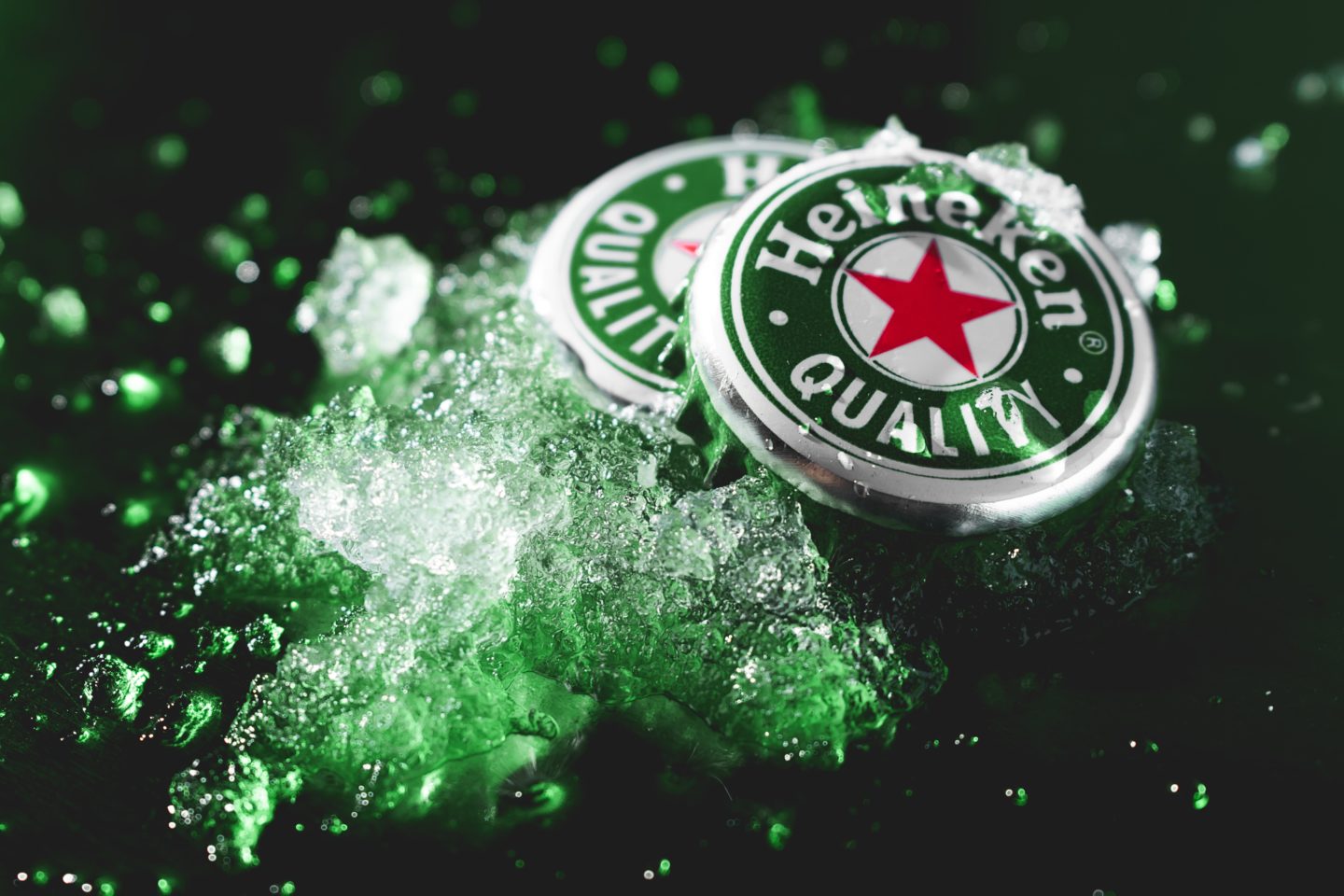IMD: Arnold, can we start by asking you about the scope of your role at HEINEKEN?
Arnold Dhanesar: I joined HEINEKEN in August 2021, when the business was beginning to implement its new EverGreen strategy. The name was inspired by nature’s resilience and ability to adapt and renew itself. We know it’s not the biggest or the strongest that will survive, but the most adaptable. Our success will depend on our ability to respond to changing market conditions, while staying true to our company’s values and heritage.
At HEINEKEN, people are at the heart of our business. To achieve our ambitions, we require the very best talent: people who are highly motivated to deliver results and guided by a strong sense of purpose. We sum this purpose up with the phrase: “We brew the joy of true togetherness to inspire a better world.” At HEINEKEN, we continue to bring people together in an increasingly divided world.
My role is to steward the end-to-end employee experience using our specialized centers of excellence, including organizational culture; talent acquisition; talent management; leadership development; the global learning organization; diversity, equity and inclusion [DEI]; performance management; and succession. You could think of it as a “horizontal integrator” role that supports the shaping and capability-building of our people.
And what does that mean in terms of HEINEKEN’s EverGreen strategy?
EverGreen represents transformation of our business. We are evolving our purpose, values and behaviors. As part of that, we have designed a learning and leadership suite of programs to help us deliver our business strategy.
A key part of our people strategy is the design and implementation of a leadership development curriculum, which targets critical employee segments. We realize that our leaders play an invaluable role in the execution of our strategy, so we have worked with IMD to co-create a selection of the curriculum, including the refreshed HEINEKEN International Management Course (HIMAC) for senior managers and the Women’s Interactive Network (WIN) for female talent.
IMD: What does that curriculum consist of and how will it be delivered?
The curriculum has been adapted to support our purpose and to unlock the full potential of our people and organization. The design principles of the curriculum feed into the enablers of a healthy organizational culture. For example, our view is that we need to “diverge” and then “converge;” diverge, meaning to listen to lots of different points of view, within the organization and externally, and then converge to define a shared purpose.
We also felt we needed to be more “outside looking in.” That’s where our partnership with IMD has been instrumental. We’re collaborating on identifying external trends and themes that could help us design a relevant contemporary curriculum.
We absolutely didn’t want talent just spending a week or two in the classroom, so we created a six-month learning journey. HIMAC is designed to run between two “bookends:” in the first week, individuals come together in person; they then spend six months in each other’s virtual company, before coming back together at the end. We’ve recently held that first week, during which we examined external trends, specifically around strategy, digital technology, and sustainability, to get a broader perspective – and to focus on what really matters to the company.
Our business leaders partner with faculty in the delivery of the sessions, so there is immediate application to our context. We organize market visits to operationalize learnings and initiate learning projects that focus on the five pillars of the EverGreen strategy. Our culture is about celebrating “the joy of true togetherness,” so each program is deliberately designed for maximum interaction (and celebration!). At the recent HIMAC program, for example, participants attended a HEINEKEN Togetherness party with our CEO, each dressed as their favorite movie star. As this gave some scope for self-expression, we used the occasion to learn and value DEI – and to have fun, of course!
Now, we are continuing the six-month learning journey, during which the course participants will make virtual visits to a variety of companies to understand their strengths and capabilities, applying these learnings to our business and their roles in it.
What are these course participants working on over the six months and how does that feed into EverGreen?
Everyone will go through a 360-degree EverGreen leadership assessment, which has been redesigned to match our new purpose, values and behaviors. In addition, they will participate in “action learning” projects, in which they will think about the positive risks we could take and the bold moves we might make to bring the EverGreen strategy to life – and their role in doing so.
We divide course participants into groups of seven. Each group chooses a key topic, which they then work on, together with an IMD coach, under the supervision of a sponsor from our business. Then, in that final week, they get to pitch these ideas to the CEO and the executive team. So, they also get a lot of coaching on speaking, presentation, and those types of skill. It’s a far more holistic leadership learning journey than anything we have had in the past. We’re looking very specifically at the impact our leaders can make in delivering our business strategy.
We’ve also focused on aspects of leadership such as teaching. Each time they complete a module or a section, they go back, and they teach it to their teams. We believe in the concept that teaching something to others helps instill it in yourself. There is also a cascade effect, through which we can benefit the organization on all levels.
How does the program relate to the rest of the HEINEKEN workforce?
In EverGreen, as a specific strategic priority, we wanted to unleash the diverse talent in the company. We came up with what we call our “talent beliefs;” there are four of them and they are intended to unite our 82,000 employees, including all leaders and managers in the organization. We see this as our strategy to excel in the war for talent and inspire growth.
First, we believe that everyone has talent. We embrace DEI, providing an environment where each employee can develop their full potential and has an equal opportunity both to contribute to our business success and to benefit from it themselves.
Second, we need to ensure that our people can continue to learn, with regular up- and reskilling opportunities. The organization as a whole is responsible for this: leadership must provide opportunities for continuous learning and employees must embrace them with a growth mindset.
Importantly, learning should not be just classroom- or workshop-based but must be part of the flow of day-to-day work life, with coaching and mentoring happening naturally in the working environment. We’ve adjusted our performance-management solution to ensure a stream of continuous feedback, as well as a strong emphasis on adapting behaviors as an important part of performance.
Our third belief is that, to differentiate ourselves in the market, we want to invest in our people earlier in their careers. All employees need support and encouragement to engage with continuous-learning programs, but that will look different in each phase of their careers as they progress.
The fourth talent belief is about winning together and putting “we” before “me.” The HEINEKEN culture is about enjoyment of life, being together and collaborating. We believe that we can achieve more together than we can working alone.
These four talent beliefs will underpin our learning strategy going forward.
How will you measure the outcomes of this learning strategy?
Our aim is to produce individuals who feel engaged and empowered; whether we have succeeded in this will show up in our culture and climate surveys, so that’s one measure.
But the bigger impact will be in the workplace culture, and it will stem from individuals being curious and developing a continuous learning mindset.
To give you an example, I was recently at one of our largest European breweries and a supervisor told me the story of how one of our lines went down for three hours because an apprentice had ordered the wrong labelling materials. Shutting down a line for even a few hours can be costly to the business but this can be avoided through innovative training approaches.
This brewery has now implemented “learning in the flow of work,” with barcodes that can be scanned at strategic points in the line with a digital device to get immediate instruction, including a video showing you what to do. This approach contributes to “learning to order,” which can translate into significant savings from lost productivity or line closures.
We are approaching our workforce challenges holistically and imaginatively. To strengthen the case for continuous learning, we recently refreshed our framework for identifying employee potential, so that it focused on elements such as curiosity, growth mindset, drive, and being able to inspire and engage. We also refreshed our expected leadership behaviors, expanding them to eight elements, which are relevant to all employees and are evaluated through the performance-management solution. Two are directly learning-related (“embrace learning and growth;” “learn, share and reapply”).
We’re also doing a lot of work on productive dualities; for example, being daring and caring at the same time. It’s about teaching leaders to use the left and right sides of their brains in harmony – to lead, but to do so with empathy, and to allow equal influence heads (intellect/reason) and hearts (emotions/instinct) equal influence in decision-making. It takes a lot of muscle training to master our inner and outer game. We are not there yet, but we’ve made a start, and this is helping support the high performance and people-centric culture for which we are known and admired.





